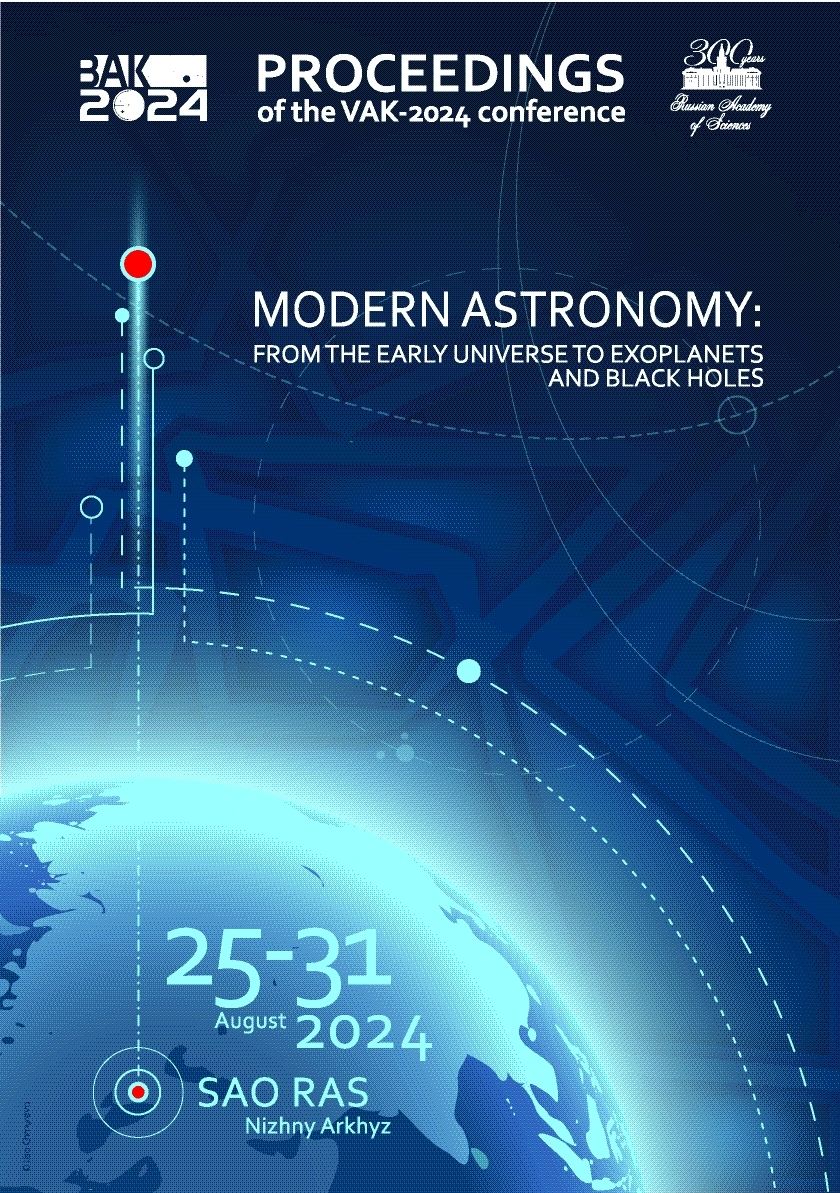UDC 523.985-125
UDC 52
UDC 53
UDC 520
UDC 521
UDC 523
UDC 524
UDC 52-1
UDC 52-6
CSCSTI 41.21
CSCSTI 41.00
CSCSTI 29.35
CSCSTI 29.31
CSCSTI 29.33
CSCSTI 29.27
CSCSTI 29.05
Russian Classification of Professions by Education 03.06.01
Russian Classification of Professions by Education 03.05.01
Russian Classification of Professions by Education 03.04.03
Russian Library and Bibliographic Classification 2
Russian Library and Bibliographic Classification 223
Russian Trade and Bibliographic Classification 614
Russian Trade and Bibliographic Classification 6135
BISAC SCI004000 Astronomy
BISAC SCI005000 Physics / Astrophysics
This paper considers the M6.5 eruptive solar flare occurred on June 22, 2015, for which ultraviolet preflare emission sources in the 1600 Å chromospheric channel have been analyzed using AIA/SDO data. Magnetic fields at the photospheric level are also analyzed using HMI/SDO vector magnetograms with a time resolution of 135 seconds. Since the selected flare has a long preflare phase (about one hour), the available time resolution of vector magnetograms is sufficient to study the flare and preflare dynamics of magnetic fields at the photospheric level. It can be noted that the literature mainly considers the change in currents during solar flares, while insufficient attention is paid to precursors. Our main goal is to provide continuous monitoring of the dynamics of electric current during the preflare period, at the beginning of the flare and during the main phases of the flare. We determined the magnetic flux (and its time derivative) in the preflare sources at the chromospheric level in comparison with the magnetic fluxes of the flare ribbons. Analysis of 135-second HMI photospheric vector magnetograms showed that there was an increase in the total vertical electric current about 1 hour before the flare. During this hour, there were variations of the mean vertical electric current density and its subsequent drop during the flare. We probably see an intermittent increase and dissipation of currents due to individual bursts in the preflare region. Also, the analysis of magnetic fluxes showed that, despite the weak preflare soft X-ray fluxes, the variations in magnetic flux during precursors are comparable in order of magnitude to what we see during the main phase of the solar flare. The difference between the time derivatives of the magnetic flux for precursor radiation sources and flare ribbons does not exceed a factor of 3.
Sun: solar flares; precursors; magnetic field; electric current
1. Artemyev A., Zimovets I.V., Sharykin I.N., 2021, Astrophysical Journal, 923, id. 151
2. Bamba Y., Lee K.-S., Imada S., Kusano K., 2017, Astrophysical Journal, 840, id. 116
3. Sharykin I.N., Zimovets I.V., Myshyakov I.I., 2020, Astrophysical Journal, 893, id. 159
4. Scherrer P.H., Schou J., Bush R.I., et al., 2012, Solar Physics, 275, p. 207
5. Sun X., Hoeksema J.T., Liu Y., et al., 2017, Astrophysical Journal, 839, id. 67







